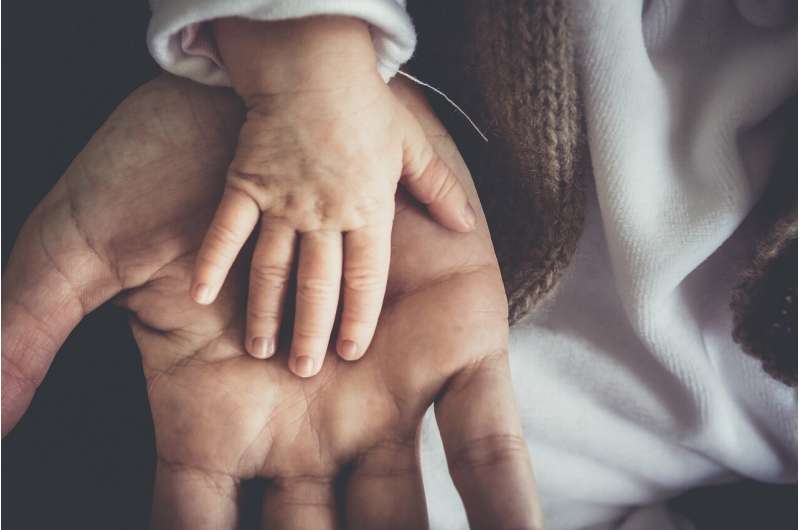Credit: CC0 Public Domain
A fast, cheap paper test that can detect jaundice in newborns is on the verge of bedside validation and commercialisation, and distribution to health practitioners across the world.
The joint-development by Monash University's Faculty of Engineering, the Monash Institute of Medical Engineering and Monash Health, has the potential to be commercialized for point-of-care diagnosis of neonatal jaundice in both homecare and hospital settings.
Monash researchers, led by Professor Wei Shen and Dr. Weirui Tan from the Department of Chemical Engineering, in collaboration with clinical champions Associate Professor Dr. James Doery and Dr. Katrina Harris, have developed a paper test for bilirubin levels, which provides results in less than 10 minutes at a cost of about 60 cents each.
The small volume of samples and reagents needed and a simple kit could one day mean babies in remote and regional areas, and under-resourced poorer countries, could have their bilirubin levels easily monitored and life-changing treatment administered.
The use of this device could release the strain on hospital resources in major cities, including the pressure of bed shortages in hospitals.
"Home treatment of jaundice is currently limited by expensive phototherapy equipment (biliblanket), nursing visits for invasive moderate blood volume testing, and delays in blood results being made available," Dr. Harris, Medical Lead at Monash Children's @ Home, said.
The method developed by the research team uses tape-paper sensing and involves blood being applied directly onto paper which is capable of separating plasma from whole blood and measuring bilirubin by a colorimetric diazotization method.
"The most promising aspect of the tape-paper sensing approach for neonatal blood sample measurement has been verified in comparison with the current hospital pathology laboratory method. And it can be done in the family home, anywhere in the world, with almost instant results," Dr. Shen said.
Jaundice is a common condition that impacts roughly 60 percent of newborns. A newborn's bilirubin levels peak at about two to four days of age, commonly when they are already back home.
However, severe jaundice can cause brain damage if left untreated. The affected baby often needs a home visit from a nurse and a blood test, which can be expensive and takes time for results to determine whether hospital readmission is required.
"The current procedure, adopted by Monash Children's Hospital, for monitoring neonates who have been discharged three days after birth is via home-visits by nurses collecting neonates' blood samples and then conducting blood bilirubin assays in the hospital," Dr. Harris said.
"This process is followed by doctors making treatment decisions and nurses re-visiting the infants to provide treatments. Such a delayed analysis and feedback process can prolong treatment and increases risk to jaundice babies.
"Left untreated, high levels of bilirubin may result in brain impairment. This simple, fast, accurate, low-cost and timely point-of-care analysis of total bilirubin provides an unmet need, especially in resource-limited areas."
Using blood samples from jaundiced neonates between the ages of 1-15 days, supplied by Monash Children's Hospital, the novel device was tested to screen the bilirubin levels whether below or above the threshold concentration based on the color intensity comparison.
The novel tape-paper sensor generates uniform color distribution on the paper by eliminating the "coffee stain" effect through two mechanisms. "This improves the accuracy of colorimetric evaluation on paper-based analytical devices," Dr. Tan said.
"Such methodology is helpful to doctors and parents in determining if further clinical treatment needs to be adopted.
"The ability to commercialize these tape-paper sensors means we can get this into the hands of hospitals and nurses so they can provide timely care and support to newborns and their families."
More information: Weirui Tan et al, Three-dimensional microfluidic tape-paper-based sensing device for blood total bilirubin measurement in jaundiced neonates, Lab on a Chip (2019). DOI: 10.1039/C9LC00939F
Journal information: Lab on a Chip
Provided by Monash University
























